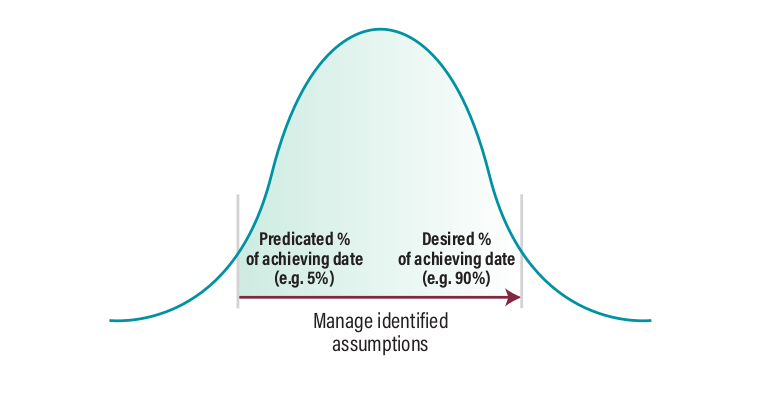How can we avoid the timescales of the programme spinning out of control?
Strategic Target Analysis (STA) can be used to assess the probability of meeting critical milestones and also showing the assumptions that need to be managed in order to recover timescales. STA can be used at any phase of a programme from the proposal stage onwards.
It works by adding a quality/confidence dimension to the estimating process so that high quality estimates, based on relevant experience, are treated differently from low quality estimates, which are little more than guesses, and can be done in days rather than weeks.

The output takes the form of a probability distribution diagram and a “roadmap” of risky assumptions (and opportunities) that need to be managed in order to move the curve to the left and squeeze it (i.e. reduce the potential delays and the uncertainty). The assumptions are rigorously linked to the estimates that have been made so that the effects of managing a given risky assumption, or realising an opportunity, remain explicit throughout the process.
STA is particularly useful in the early stages of a project/enterprise, when the desired target dates are subject to great uncertainty, to quantify the magnitude of the risk and focus it down.
The basic methodology of STA can also be applied to cost uncertainties (ie using SCA) and benefit uncertainties (ie using SBA).
